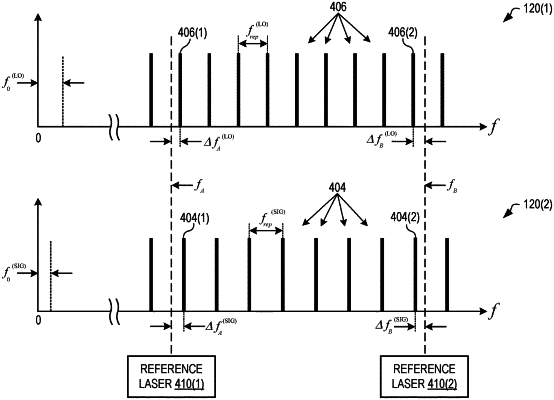| CPC G01J 3/4531 (2013.01) [G01N 21/274 (2013.01); G01J 2003/2866 (2013.01); G01J 2003/4538 (2013.01)] | 13 Claims |

|
1. A method for measuring a frequency of a laser, comprising:
locking a first tooth, of a first plurality of teeth of a first frequency comb of a dual frequency-comb spectrometer, to the laser at a first offset frequency;
locking a second tooth, of a second plurality of teeth of a second frequency comb of the dual frequency-comb spectrometer, to the laser at a second offset frequency;
operating the dual frequency-comb spectrometer, with the first and second teeth locked to the laser, to generate a sequence of consecutive interferograms;
measuring a walking rate of a plurality of center bursts in the sequence of consecutive interferograms;
determining, based on the measured walking rate and a number of data points in each of the interferograms, a number of teeth in each of a plurality of Nyquist windows formed by the dual frequency-comb spectrometer;
determining a Nyquist number of one of the plurality of Nyquist windows that covers the frequency of the laser; and
determining the frequency of the laser based on (i) the number of teeth, (ii) the Nyquist number, and (iii) a comb spacing of one of the first and second frequency combs.
|